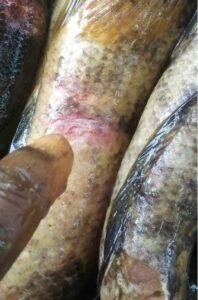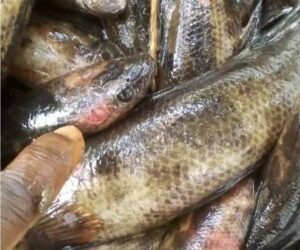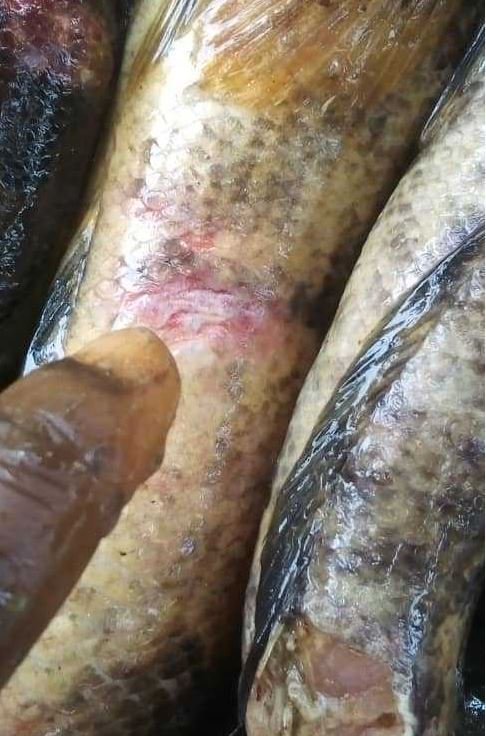adverts
A mysterious disease affecting fish in the Ellembelle District’s Kamgbunli community is causing severe disruption to local fishing activities, with fishermen raising alarm over its potential impact on their livelihoods.
Fishing activities in the Islamic community of Kamgbunli, located in the Ellembelle District of Ghana’s Western Region, have come to a halt as a strange disease continues to affect local fish caught in rivers.

adverts
Fishermen are now calling for an urgent investigation into the cause of the outbreak, which has left them struggling to sell their catches and threatening their economic well-being.
The problem has escalated over the past month, with fishermen reporting that the fish they have caught have been suffering from severe skin infections. These infections manifest as red, swollen lesions that quickly transform into gaping wounds.
Additionally, affected fish have shown signs of internal decay, with rotten abdomens and patches of missing scales. The damage has rendered the fish unsellable and unfit for consumption, creating serious challenges for the fishing community.
The fishermen, who rely heavily on their catch for income, are particularly concerned about the long-term effects of the disease on the local aquatic ecosystem. They suspect that illegal mining, locally known as “Galamsey,” may be the root cause of the outbreak. The fishermen have pointed to the pollution of rivers such as Fia, Ebi, and Amanzule, where the muddy slurry from mining activities is believed to be severely damaging the health of indigenous fish species, including the local “Bile” catfish.

According to Shaibu Issaka, a former assembly member of Kamgbunli, the situation has grown increasingly alarming. “We hadn’t reported it yet, thinking it was a normal occurrence, as I mentioned earlier. However, after the alarming events of Friday, January 10, and Saturday, January 11, we became concerned and plan to report it on Monday, January 13, for further investigation,” Issaka said.
He went on to explain that while the issue initially seemed isolated, the ongoing and increasing frequency of the disease has sparked panic within the community. “At first, we thought it was normal, but the continuous occurrence is creating a high level of panic among our community members,” he added.
The disease has effectively brought fishing activities in Kamgbunli to a standstill, with many fishermen unable to make a living due to the unsellable, diseased fish. The situation has prompted the community to demand an investigation into the cause and source of the disease.
Local fishermen are urging stakeholders, including government agencies, environmental groups, and the mining industry, to take immediate action to identify the cause of the outbreak.

They stress the importance of restoring the health of the rivers to safeguard their livelihood and ensure the long-term viability of the region’s aquatic ecosystem.
With the community now on high alert, there is an urgent need for a collaborative effort to address the environmental crisis. As the investigation unfolds, the residents of Kamgbunli anxiously await answers and solutions to restore their fishing activities and protect their way of life.


